 May 22, 2014 John E. Ross, KD8IDJ, Editor
| |||||||||||||
ARRL Celebrates its Centennial at Dayton Hamvention® 2014 Dayton Hamvention 2014 already was a Regional ARRL Centennial Event, but May 18 -- Hamvention's last day -- was the 100th anniversary of the League's founding. A birthday party and free cake
helped to draw a room-filling crowd of 200 or more for the Sunday morning occasion. ARRL President Kay Craigie, N3KN, told the gathering, "The Second Century is up to us," and expressed the hope that in another 100 years, the Amateur Radio community would reflect on the League's first century with respect and admiration. "The weather was not so hot, but the atmosphere at Hamvention was as warm as ever," Craigie observed post-Dayton. "People were in a buying mood, both at the ARRL Expo and at the Hamvention in general. I talked to several vendors who were quite pleased." Hara Arena was shrouded in fog as Hamvention opened on Friday, and cool, rainy weather -- including some hail -- prevailed initially, but by Saturday afternoon, the weather turned clear and brisk. While attendance numbers won't be available for a few weeks, some
observers said the crowd seemed to be about the same size as last year's -- which was about 24,500. Others said the crowd seemed to thin more rapidly than in past years. "People were thrilled to be there," said QST Managing Editor Becky Schoenfeld, W1BXY. "Happy to be seeing old friends and making new ones, excited about seeing new gear, and, of course, seeing what kinds of free goodies they could pick up." Crowd estimates notwithstanding, opening-day traffic was excellent at the ARRL Expo. Centennial coins remained a popular item, and some visitors expressed their appreciation to the ARRL when they stopped by. "The coins were bestowed with a warm handshake and a message of thanks for supporting the League for the past 100 years, and into the Second Century," Schoenfeld said. The ARRL contingent brought 10,000 of the coins to Dayton and gave all of them away. This year, the League Store switched to checkout via iPad. The top seller was the 2014 ARRL Field Day shirt. Other hot items were Travel Plus and the softcover edition of the ARRL's 2014 Handbook. The League received more than 1000 applications for memberships and renewals at the show, including eight Life Member applicants.
Gino Mollica, KA8YPZ, of Mansfield, Ohio, won an ARRL drawing for $200 worth of ARRL Publications. Equipment dealers did well, by most accounts. Several major manufacturers remarked that sales were going very well, for both in-stock and on-order items. One smaller vendor reported that sales were four times greater than last year's. On Friday afternoon, the ARRL presented the 2013 Bill Orr, W6SAI, Technical Writing Award to Carl Luetzelschwab, K9LA. The ARRL Foundation selected Luetzelschwab for his article "The Sun and the Ionosphere," which appeared in the March 2013 issue of QST. New products seen at Hamvention included the TEN-TEC Patriot, Model 507, a dual-band (20 and 40 meters) SSB/CW QRP transceiver that modifies easily for custom applications. It runs on an Uno32 microprocessor, and uses Arduino-compatible software. Yaesu's new offering, the DR-1X repeater, a follow-up to the DR-1 that was beta-tested last year. FlexRadio debuted its Flex-6300, a software-defined radio for 160 through 6 meters. Other new products included the TeleSense remote site monitoring system from Sierra Radio Systems; it offers station, repeater, and site
monitoring via a web or cell phone interface. Hendricks QRP Kits had its new MBDC multiband CW transceiver on display. Two Saturday ARRL forums -- "Getting Started With Antenna Modeling," with Ward Silver, N0AX, and a second showing of "ARRL at 100: A Century of Ham Radio" -- were standing room only. The Hamvention Youth Forum attracted some 70 attendees and featured presentations by young hams. Silver returned to the speaker's podium Saturday afternoon for "Impedance Matching 101," which drew a capacity crowd. The popular ARRL Member Forum began with the awarding of the 2014 William R. Goldfarb Memorial scholarship to Padraig Lysandrou, KC9UUS. After that, attorney Fred Hopengarten, K1VR, spoke on "Amateur Radio and the Law," followed by remarks from President Craigie. Craigie said this week that visitors were especially enthusiastic about the ARRL Centennial operating events -- the W1AW/x portable operations and the associated Centennial QSO Party. As for Hamvention? "I'm ready to go back and do it all again next year," she said. Hamvention Awards Saturday evening, Hamvention's sponsor, the Dayton Amateur Radio Association (DARA), held its annual awards dinner at Dayton's beautiful Carillon Historical Park. This year's four honorees were Georgia's Gwinnett Amateur Radio Society for Club of the Year; Fldigi creator David Freese Jr, W1HKJ, winner of the Technical Excellence Award; ARRL CEO David Sumner, K1ZZ, winner of the Special Achievement Award; and ARRL President Emeritus Larry E. Price, W4RA, who was honored as Amateur of the Year. For more photos, see the Dayton Hamvention 2014 photo album on the ARRL's Facebook page. Read more. Amateur Radio Volunteers Assist Rescue Operations in Balkans Flooding Amateur Radio volunteers in Serbia put in long hours this week, supporting rescue operations in the wake of unprecedented flooding in the Balkans that has affected Serbia, Croatia, and Bosnia-Herzegovina. Meteorologists have called the flooding the worst that
Serbia has experienced in more than 100 years. The death toll stands at more than three dozen. CNN reported that 13 bodies had been recovered in the town of Obrenovac, Serbia, where radio amateurs have been coordinating communication to boat crews that are rescuing stranded residents. Alliance of Serbian Radio Amateurs (SRS) member Nenad Supurovic, YU1TTL, deployed to Obrenovac, after registering with the Crisis Center, to support communication between rescuers and emergency managers keeping track of those needing to be evacuated. "We showed our radio transmitters, and [the police] immediately let us through, as if we were ministers of state," Supurovic told Al Jazeera in an interview. "We went and reported to the radio amateur just finishing his shift. There were four of us." He said the hams have been able to provide "an alternative link" to the rescue crews. The crisis center sends addresses of people who need to be evacuated, and the Amateur Radio volunteers tell the rescue boat crews where to go next. Each boat has a local resident aboard, who knows the town and can direct the vessel to the right location -- in some cases, even though flood waters already have obscured street names and house numbers. Supurovic said that by and large the people who were evacuated appeared to be in good condition. "At the beginning it looked like they were just really tired," he told Al Jazeera, "like they'd spent the whole day on public transport."
Marijan Miletic, S56A/N1YU, who has been monitoring the flood situation from Slovenia, told ARRL that radio amateurs in Serbia and Bosnia have activated emergency networks, and Tilen Cestnik, S56CT, was dispatched to the affected region to assist. He said there has been a lot of mutual aid among the former republics of Yugoslavia. Miletic said Zoran Mladenovic, YU1EW, was heading up the headquarters operation in the Serbian capital of Belgrade, with the help of a wide-coverage 2 meter repeater. Belgrade is at the confluence of the Sava and Danube rivers and could see flooding later this week. SRS member Dragan Antonic, YU1UO, has been working at an emergency operations center in Belgrade. He estimated that hams already have handled some 25,000 pieces of traffic. "Our equipment, our people, and our knowledge are used to pass...information to the rescue people," he explained in an interview with Kristina Kukolja of SBS World News. He said the radio communication helps the crews in the field to be more efficient in
locating and evacuating those in danger. The ham radio volunteers, he told Kukolja, will be on the scene "for as long as it takes." An estimated 24,000 people have had to be evacuated to safety in Serbia, while another 30,000 people were displaced in Bosnia-Herzegovina. CNN quoted a May 18 statement from the Serbian Embassy in Washington, which said that many towns and cities in western Serbia were "completely underwater" and describing the situation as an "unimaginable catastrophe."
"Red Badges on the Air" Centennial QSO Party Activity Set for June 1 To further boost enthusiasm for the ARRL Centennial QSO Party, the League will sponsor a "Red Badges on the Air" activity on June 1 (UTC). The object is to provide an opportunity for Centennial QSO Party participants to work more ARRL officers, elected officials -- such as Director or Section Manager -- and Headquarters staffers and volunteers, which offer higher point value in the year-long event. "The badges they wear at hamfests, conventions, and other formal occasions are red, hence the term 'Red Badges on the Air,'" explained ARRL Media and Public Relations Manager Sean Kutzko, KX9X.
"ARRL members around the world are excited about the Centennial QSO Party," he added. "Activity on the bands is noticeably improved, and more contacts are being made than ever." QSOs with "Red Badges" are worth a lot of points -- as much as 300 points per contact for working ARRL President Kay Craigie, N3KN -- so participants can increase their Centennial QSO Party tally very quickly. Kutzko stressed that the event is "an activity day, not a contest." There is no required amount of operating time. Participants can call "CQ ARRL Centennial QSO Party" on phone or "CQ CENT" on CW or digital modes. While the event is focused on encouraging those with ARRL red badges to hand out Centennial QSO Party points, all activity is welcome, regardless of point value; every ARRL member is worth at least one point in the Centennial QSO Party. Participants get credit for each band/mode contact, regardless of point value. ARRL Centennial QSO Party participants can use the leader board to determine how many points they have accumulated.
W100AW, Charter Life Member (CLM), or Past Section Manager (PSM), 100 points. ARRL Headquarters department managers (DM), 75 points; ARRL Headquarters staffers/volunteers (HQ), 50 points; Assistant Director (AD), 40 points, and NCJ editor (NCJ) and QST columnist (QST), 30 points. W1AW Centennial Operations Now in New York and Colorado The ARRL Centennial W1AW WAS operations taking place throughout 2014 from each of the 50 states are now in New York (W1AW/2) and Colorado (W1AW/0). They will relocate at 0000 UTC on Wednesday, May 28 (the evening of May 27 in US time zones), to Missouri (W1AW/0) and Wyoming (W1AW/7). During 2014 W1AW will be on the air from every state (at least twice) and most US territories, and it will be easy to work all states solely by contacting W1AW portable operations. Some schedule changes have been made, and the W1AW WAS list has been updated to reflect these. To celebrate the 100th anniversary of the ARRL, the ARRL Centennial QSO Party kicked off January 1 for a year-long operating event in Working W1AW/x from each state is worth 5 points per mode/contact, even when working the same state during its second week of activity. To earn the "Worked all States with W1AW Award," work W1AW operating portable from all 50 states. (Working W1AW or W100AW in Connecticut does not count for Connecticut, however. For award credit, participants must work W1AW/1 in Connecticut.) A W1AW WAS certificate and plaque will be available. The ARRL has posted an ARRL Centennial QSO Party leader board that participants can use to determine how many points they have accumulated in the Centennial QSO Party and in the W1AW WAS operations. Log in using your Logbook of The World (LoTW) user name and password, and your position will appear at the top of the leader boards. Results are updated daily, based on contacts entered into LoTW. ARRL Responds to Ukrainian Amateur Radio League Regarding DXCC Status of Crimea The ARRL has responded to an appeal from the Ukrainian Amateur Radio League (UARL) to "consider the information regarding the status "We appreciate the high regard you have expressed for the DXCC program," Sumner wrote. "However, the list of DXCC entities is simply for the purpose of giving radio amateurs a consistent way to compare their DX achievements. It is not intended to express a position with respect to sovereignty and should not be regarded as such." The Awards Committee has concluded that a QSL with a call sign issued by Ukraine and showing the entity name as Ukraine counts as Ukraine, while a QSL with a call sign issued by Russia and showing the entity name as Russia counts as Russia. "A QSL that satisfies neither condition does not count for either entity," the committee said.
Grishchenko had asked the ARRL to consider this information when determining "the conditions of meeting award requirements, as well as in determining the winners of competitions held." Sumner told Grishchenko that the ARRL Awards Committee's determination "is consistent with the treatment, for DXCC purposes, of other territory that may be described as either 'temporarily occupied' or disputed." "We join the world community in the hope that the difficulties and uncertainties currently being faced by the people of Ukraine will be resolved peacefully and with full regard for human rights," Sumner concluded. WX4NHC National Hurricane Center Annual Station Test Set for May 31 Now in its 34th year, WX4NHC at the National Hurricane Center (NHC) in Miami, will be on the air Saturday, May 31, for the annual NHC Station Test. The event will begin at 1300 UTC and wrap up at 2200 UTC. "The purpose of this event is to test Amateur Radio Station equipment, antennas and computers prior to this year's Hurricane Season, which starts June 1 and runs through November 30," said WX4NHC Amateur WX4NHC will make brief contacts with participating station on various bands and modes, exchanging signal reports and basic weather data. For example, stations may report "sunny" or "rain" or "cloudy" in describing the conditions at their locations. Ripoll said WX4NHC will operate on HF, VHF, UHF, 2 meter 30 meter APRS, and be available via Winlink (subject line must contain "//WL2K"). "We will try to stay on the recognized Hurricane Watch Net (HWN) frequency of 14.325 MHz most of the time and announce when we QSY," Ripoll said. WX4NHC also plans to be on the VoIP Hurricane Net from 2000 until 2200 UTC (IRLP node 9219; EchoLink WX-TALK Conference node 7203). In addition, the station will be active on South Florida VHF and UHF repeaters. QSL cards are available to participating stations via WD4R; include a self-addressed stamped envelope. Do not send cards to the National Hurricane Center. Read more. ARISS International Partners Regroup at First In-Person Meeting since 2011 Representatives of the Amateur Radio on the International Space Station (ARISS) International partners met in person last month for the first time in 2-1/2 years to reassess the program's direction and to Former ESA astronaut Gerhard Thiele, DG1KIL, welcomed the representatives. Thiele, who heads ESA's Human Spaceflight and Operations Strategic Planning and Outreach office, told the gathering that ESA recognizes the benefit to students of being able to communicate with the ISS crew directly via Amateur Radio, and that students learn a lot as a result of these ARISS contacts. The meeting offered an opportunity to sort out where things stand for ARISS and to enhance collaboration among the ARISS partners. Bauer expressed his desire for a committee to review all charters that ARISS has with space agencies around the world and to develop a plan for establishing future agreements.
In a wide-ranging presentation, ARISS International Project Selection & Use Committee representative Lou McFadin, W5DID, addressed long-term equipment possibilities. Among other requirements, McFadin said, ARISS should have the ability to control its equipment from Earth, and he said that developing software-defined equipment would permit this. He also spoke of the need for an "override power switch," as the astronauts need to shut down ARISS equipment during safety-critical events, such as spacecraft dockings or spacewalks. Given the paucity of space aboard the ISS, ARISS also must minimize the amount of real estate its equipment occupies, McFadin said. He also noted that there is "little or no" ISS crew time available to address ISS ham gear issues. McFadin further discussed the advantages of installing a higher-power mobile VHF/UHF transceiver in the Columbus module,
similar to the Kenwood D-700 located in the Service Module. In recent months crew members have been using a 5 W Ericsson hand-held transceiver for school contacts, and signal levels have been lower than the team would prefer. McFadin suggested that a portable mobile system with a power output of 15 W or greater might improve this situation. ARISS-Europe Chair Gaston Bertels, ON4WF, addressed considerations for using the "Ham Video" Amateur Radio digital TV system in conjunction with school contacts. He suggested a presentation that shows what Ham Video can do, in order to stimulate thinking about ways to make the best use of the system -- such as, for example, uploading a school's science project that could be viewed by many students. ARISS is an international educational outreach with participation from ARRL, NASA, ESA, the Russian Space Agency (ROSCOSMOS), CNES, JAXA, CSA, and AMSAT. Read more. -- ARISS KickSat Re-Enters Atmosphere Without Deploying "Sprite" Satellites KickSat Project Manager Zac Manchester, KD2BHC, has announced that the KickSat CubeSat reentered the atmosphere on May 14 (UTC) and burned without deploying its cargo of tiny "Sprite" satellites. "Unfortunately, we were not able to command the Sprite deployment in time," said Manchester, a Cornell University aerospace engineering graduate student. "While we are certainly disappointed that things did not go as planned, I think we still have a lot to be proud of." Manchester said that more than 300 people from around the world cooperated to make KickSat a reality. "We built a spacecraft, tested it,
and launched it," he said. "Hundreds of people had their names flown in space, more than a dozen radio amateurs were able to receive signals from KickSat's beacon radio, and volunteers collected and processed telemetry data and predicted KickSat's orbit and reentry. This kind of participation is exactly what KickSat is all about and I'm glad we all got to share in this experience." Manchester said he plans to take the lessons learned to build an even better KickSat-2. "This is only the beginning!" he said. The Sprites, PC boards each about an inch or so square, would have been the smallest satellites ever to orbit Earth. Manchester said an unexpected reset of KickSat's master clock caused the failure, preventing the CubeSat from releasing its cargo of some 100 Sprite satellites before it deorbited. The satellite launched successfully April 18, and the ground control team at Cornell as well as several Amateur Radio operators around the world made contact with the spacecraft. ARRL Offers New Amateur Radio Public Service Announcements ARRL Media and Public Relations Manager Sean Kutzko, KX9X, has added new 30-second radio/audio public service announcements (PSAs) to promote Amateur Radio and the 2014 ARRL Field Day. The spot named "Amateur" talks about the meaning of the word Two PSAs for 2014 Field Day are available. One includes 8 seconds at the end for local clubs, one does not. The PSAs for Promotions web page includes tips on how to get airplay for Amateur Radio PSAs. New ARRL Section Managers Elected Four new ARRL Section Managers will take office on July 1. Ballots were counted May 20 at ARRL Headquarters for contested races in the spring SM election cycle. In Indiana, Joseph Lawrence, K9RFZ, of Fort Wayne, received 652 votes to top incumbent Section Manager Lou Everett Sr, WA5LOU, of Cumberland, who polled 482 votes. Everett has been SM for the past 2 years.
In Northern Florida, Stephen Szabo, WB4OMM, of Port Orange, polled 833 votes, while Gary Alberstadt, KA3FZO, of Monticello garnered 296 votes. Current Northern Florida SM Paul Eakin, KJ4G, decided not to run for a new term of office after serving since 2008. In Delaware, Bill Duveneck, KB3KYH, of Milton, received 142 votes to defeat Jerome Palmer, N3KRX, of Houston, who got 122 votes. Outgoing SM Frank Filipkowski, AD3M, of Wilmington, who has served as SM in Delaware since 2006, did not run for a new term. Because candidates in Delaware had to be resolicited for this nomination/election cycle, Duveneck's term of office will be 18 months instead of 24. Five incumbent ARRL Section Managers ran unopposed and were declared elected for new 2-year terms beginning on July 1: Tom Ciciora, KA9QPN (Illinois); Everett Curry, W6ABM (Oregon); Brandon Bianchi, NI6C (Santa Clara Valley); Paul Gayet, AA1SU (Vermont), and Gary Sorensen, W9ULK (Wisconsin). Read more. CQ Announces 2014 Hall of Fame Inductees CQ Magazine has announced its 2014 Hall of Fame inductees. The Class of 2014 adds two members each to the CQ DX Hall of Fame and the CQ Contest Hall of Fame, as well as eight members to the CQ Amateur Radio Hall of Fame.
The 2014 inductees to the CQ DX Hall of Fame are Joe Reisert, W1JR, and David Collingham, K3LP. The 2014 inductees to the CQ Contest Hall of Fame are J. Scott Redd, K0DQ, and Ed Muns, W0YK. Formal inductions to the CQ Contest and DX Halls of Fame took place at Dayton Hamvention®. Read more. A Century of Amateur Radio and the ARRL Continuing our look at amateur SSB during its early years, there was one major human obstacle: Teaching phone operators how to operate their receivers for SSB reception. For AM reception, operators were in the habit of setting RF gain to maximum and adjusted the audio gain to control the speaker level. It was difficult to convince operators that, for SSB reception, they needed to turn up the audio gain and back off the RF gain, so the incoming SSB signal level would be at the level the receiver needed for the BFO to insert a "carrier" signal. Operators soon learned how to tune in SSB signals. Also, back in those days of analog frequency control, receiver frequency drift was a problem, and the frequency (or the BFO frequency) would have to be tweaked occasionally to keep the SSB signal properly tuned. That problem disappeared, as the oscillators in newer receivers became more stable.
In July 1948, QST began publishing the monthly column, "On the Air with Single Sideband," by By Goodman, W1DX, which continued until March 1954. By the early 1950s, some AM operators still looked at "that Donald Duck talk" with disdain, but most hams realized the value of SSB, and the changeover to SSB proceeded. By April 1953, there were at least 300 active SSB stations in the US. The first SSB DXCC was awarded in 1955, and the first WAS and WAC awards were made in 1956. One very interesting SSB-related happening took place 1956. Air Force General Curtis LeMay had been assigned in 1948 to head the Strategic Air Command in. LeMay was well known on the ham bands as Curt, W6EZV. By virtue of SAC's mission, extremely reliable, long-haul communication was necessary. Separate radio operators were being eliminated from bomber crews, and the first thought was that SAC would communicate using HF AM radios. Because of his Amateur Radio background, LeMay had become aware of the value of SSB. So, he had Amateur Radio SSB gear installed in a SAC test aircraft that made two flights from SAC HQ in Offutt AFB, Nebraska -- one to Greenland and one to Okinawa -- while making SSB contacts all along the way on the ham bands! In addition to LeMay as an operator, two civilian operators were on board -- Art Collins, W0CXX (Collins Radio), and Leo I. Myerson, W0GFQ (World Radio Labs). A lot of hams around the world received treasured QSL cards from contacts made with that rare aeronautical mobile. Soon thereafter, SAC announced its decision to install HF SSB equipment on its bombers and other aircraft. As you can see, Amateur Radio lent a helping hand to SAC and our nation's defense posture, back in the day when the Cold War was getting very chilly. Next week we'll leave early SSB and move on to another subject. The K7RA Solar Update Tad Cook, K7RA, in Seattle, reports: Over the past week we saw a decline in solar activity, and the 45-day outlook showed weaker numbers as well. Average daily sunspot numbers for May 15-21 were 129.4, while the previous average was 142.4. Average daily solar flux declined from 157.5 to 128.5. The daily sunspot number on Wednesday dropped down to 100. Last week the solar flux prediction for Friday through Sunday on Field The latest prediction has solar flux at 115 on May 22, 110 for May 21-28, 115 on May 29, 120 for May 30-June 3, 125 for June 4-5, 130 for June 6-7, 135 for June 8-10, and 130 for June 11-12. Flux values then drop down to 105 for June 22-24. Predicted planetary A index is 8 for May 22-23, 5 for May 24-25, 7 on May 26, 5 for May 27-June 3, 12 on June 4, 8 for June 5-8, and 5 for June 9-16. This weekly "Solar Update" in The ARRL Letter is a preview of the "Propagation Bulletin" issued each Friday. The latest bulletin and an archive of past propagation bulletins is on the ARRL website. In tomorrow's bulletin look for an updated forecast and reports from readers. Send me your reports and observations. Just Ahead in Radiosport
Visit the Contest Calendar for details. Upcoming ARRL Section, State and Division Conventions and Events
Find conventions and hamfests in your area.
ARRL -- Your One-Stop Resource for
Subscribe to...
Free of charge to ARRL members...
| |||||||||||||


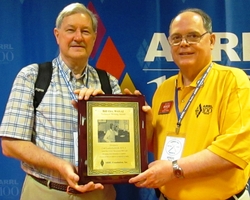
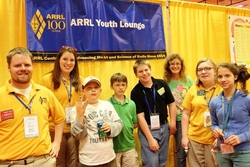

.jpg)
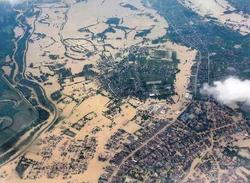
.jpg)
.jpg)
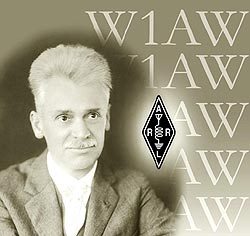 which participants can accumulate points and win awards. The event is open to all, although only ARRL members and appointees, elected officials, HQ staff and W1AW are worth ARRL Centennial QSO Party
which participants can accumulate points and win awards. The event is open to all, although only ARRL members and appointees, elected officials, HQ staff and W1AW are worth ARRL Centennial QSO Party 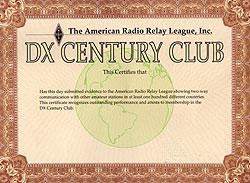 of Crimea as temporarily occupied territory." UARL President Vladimir Grishchenko, UT0FT, told the ARRL on May 3, that Russia's "illegal annexation" of Crimea "does not change the status of this territory, which legally belongs to Ukraine." ARRL CEO David Sumner, K1ZZ, on May 21 acknowledged the UARL's position and reiterated the ARRL Awards Committee's determination that the annexation did not lend Crimea status as a new DXCC entity.
of Crimea as temporarily occupied territory." UARL President Vladimir Grishchenko, UT0FT, told the ARRL on May 3, that Russia's "illegal annexation" of Crimea "does not change the status of this territory, which legally belongs to Ukraine." ARRL CEO David Sumner, K1ZZ, on May 21 acknowledged the UARL's position and reiterated the ARRL Awards Committee's determination that the annexation did not lend Crimea status as a new DXCC entity.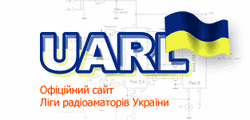 Grishchenko had pointed out that the UN does not recognize Crimea's annexation, and that the US government is "currently working actively to preserve the territorial integrity of Ukraine." He further asserted that, according to the International Telecommunication Union (ITU), Ukraine is responsible for spectrum usage in Crimea, and that only Ukraine can issue licenses, despite what he called Crimea's "temporary" status as an occupied territory.
Grishchenko had pointed out that the UN does not recognize Crimea's annexation, and that the US government is "currently working actively to preserve the territorial integrity of Ukraine." He further asserted that, according to the International Telecommunication Union (ITU), Ukraine is responsible for spectrum usage in Crimea, and that only Ukraine can issue licenses, despite what he called Crimea's "temporary" status as an occupied territory.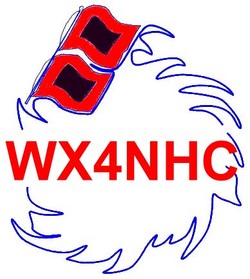 Radio Assistant Coordinator Julio Ripoll, WD4R.The annual Station Test is not a contest or simulated hurricane exercise. "This event is will be good practice for ham radio operators worldwide as well as for NWS staff to become familiar with Amateur Radio communications available during times of severe weather," he added.
Radio Assistant Coordinator Julio Ripoll, WD4R.The annual Station Test is not a contest or simulated hurricane exercise. "This event is will be good practice for ham radio operators worldwide as well as for NWS staff to become familiar with Amateur Radio communications available during times of severe weather," he added.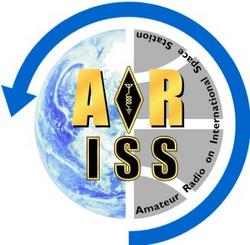 consider new objectives. The European Space Agency (ESA) hosted the April 3-5 gathering at its European Space Research and Technology Centre (
consider new objectives. The European Space Agency (ESA) hosted the April 3-5 gathering at its European Space Research and Technology Centre (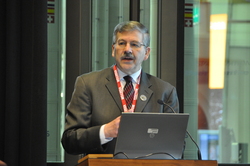
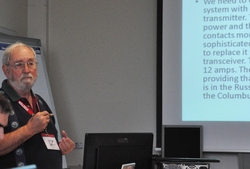
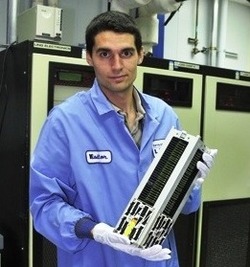
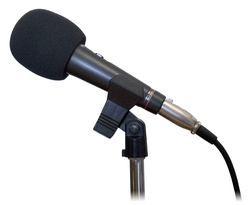 "amateur" and how the Amateur Radio Emergency Service (ARES) helps during disasters. It includes an 8-second "bed" at the end for local clubs to provide contact information. "Careers" tells how Amateur Radio skills can lead to a career path, and it references the ARRL website. "What Is Ham Radio" is a generic spot to promote how much fun Amateur Radio offers. It includes an 8-second bed at the end for a local club billboard.
"amateur" and how the Amateur Radio Emergency Service (ARES) helps during disasters. It includes an 8-second "bed" at the end for local clubs to provide contact information. "Careers" tells how Amateur Radio skills can lead to a career path, and it references the ARRL website. "What Is Ham Radio" is a generic spot to promote how much fun Amateur Radio offers. It includes an 8-second bed at the end for a local club billboard. In Maine, Bill Crowley, K1NIT, received 258 votes, to defeat veteran incumbent Section Manager Bill Woodhead, N1KAT, who got 156 votes. Woodhead has served as Maine's SM since 1998.
In Maine, Bill Crowley, K1NIT, received 258 votes, to defeat veteran incumbent Section Manager Bill Woodhead, N1KAT, who got 156 votes. Woodhead has served as Maine's SM since 1998.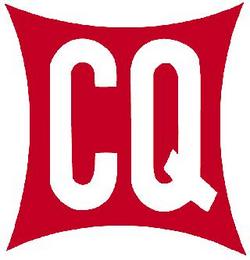 The 2014 CQ Amateur Radio Hall of Fame inductees are Clifford Berry, W9TIJ (SK); Warren Bruene, W5OLY (SK); John Huntoon, W1RW (SK); Mike Koss, W9SU (SK); Nancy Kott, WZ8C (SK); Paul Laughton, AC6B (ex-N6BVH); Ralph Showers, ex-W3GEU (SK), and Steve Wozniak, ex-WV6VLY and ex-WA6BND.
The 2014 CQ Amateur Radio Hall of Fame inductees are Clifford Berry, W9TIJ (SK); Warren Bruene, W5OLY (SK); John Huntoon, W1RW (SK); Mike Koss, W9SU (SK); Nancy Kott, WZ8C (SK); Paul Laughton, AC6B (ex-N6BVH); Ralph Showers, ex-W3GEU (SK), and Steve Wozniak, ex-WV6VLY and ex-WA6BND.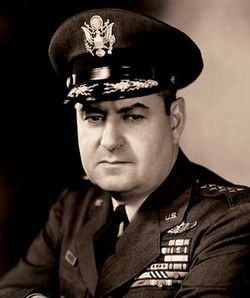
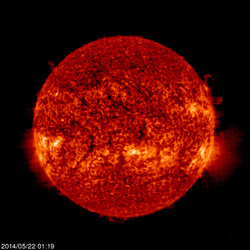 Day (June 28-29) was 125 on Friday and 135 for Saturday and Sunday. But the daily forecast changed on May 19, with predicted solar flux at 120 for all three days. Prior to May 19 solar flux was predicted to peak at 165 for June 10-11, but that forecast now has been revised downward to 135 and 130, respectively.
Day (June 28-29) was 125 on Friday and 135 for Saturday and Sunday. But the daily forecast changed on May 19, with predicted solar flux at 120 for all three days. Prior to May 19 solar flux was predicted to peak at 165 for June 10-11, but that forecast now has been revised downward to 135 and 130, respectively.







